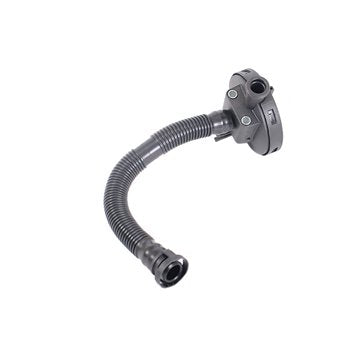Exactly How a Clp Engine Can Improve Performance in Various Industries
The arrival of CLP engines notes a considerable change in functional effectiveness throughout different sectors, driven by their capability to optimize gas usage and decrease downtime. Industries such as production and logistics stand to get significantly from their durable layout and consistent power result, which assure to simplify procedures and boost productivity. As companies significantly prioritize sustainability together with performance, the duty of CLP engines comes to be much more crucial. What stays to be seen is just how these improvements will certainly form the future landscape of industrial procedures and their influence on more comprehensive financial patterns (clp engine).
Overview of CLP Engines
CLP engines, or Continuous Fluid Propellant engines, stand for a considerable innovation in propulsion innovation, especially for space applications. These engines make use of a continual feed system that enables for the sustained expulsion of propellant, resulting in enhanced effectiveness and performance contrasted to standard solid or hybrid propulsion systems. By maintaining a consistent flow of liquid propellant, CLP engines can achieve more specific thrust control, which is essential for steering spacecraft in different objective circumstances.
The design of CLP engines incorporates advanced materials and cutting-edge fuel management systems. clp engine. This leads to reduced weight and raised dependability, essential variables for long-duration area objectives. The constant procedure minimizes the danger of combustion instability, a typical difficulty in traditional rocket engines.

Advantages in Production
The production of Constant Liquid Propellant (CLP) engines presents several notable benefits that boost both performance and cost-effectiveness. Among the main benefits is the streamlined production process, which reduces the complexity associated with traditional propulsion systems. By utilizing fluid propellant, suppliers can accomplish higher precision in engine performance, leading to enhanced power result and reduced waste.
Additionally, CLP engines help with a greater level of modularity, permitting simpler assimilation right into numerous production lines. This flexibility can substantially lower lead times and improve total functional adaptability. The use of CLP modern technology likewise has a tendency to reduce the need for considerable maintenance as a result of fewer moving components, which equates into minimized downtime and operational prices.

Applications in Logistics
Leveraging Constant Fluid Propellant (CLP) engines in logistics uses considerable benefits in operational effectiveness and dependability. These engines offer a robust service for numerous transport requirements, allowing the seamless activity of items throughout substantial ranges. The integral style of CLP engines permits constant power output, which equates into smoother and much more predictable transport timetables.
Among the essential applications of CLP engines in logistics is in heavy-duty freight transportation, where they can drive both ground and airborne automobiles. Their capability to maintain high efficiency under differing lots problems makes certain that distribution timelines are satisfied, thus enhancing consumer contentment. In addition, CLP engines can be incorporated right into automated logistics systems, assisting in real-time tracking and maximizing path planning.
In addition, the durability of CLP engines lowers upkeep downtime, allowing logistics firms to these details maximize their functional abilities. This is particularly valuable in warehousing operations, where performance in managing and transferring items is important. As logistics continues to progress, the integration of CLP engines stands for a forward-thinking method that not just improves efficiency however additionally supports the sector's growing needs for reliability and rate.
Effect On Power Efficiency
Exactly How do Continuous Liquid Propellant (CLP) engines boost energy performance in transportation? CLP engines use a consistent circulation of liquid gas, optimizing combustion processes and preserving a secure thrust outcome. This design lessens power losses related to standard burning engines, where fuel shipment can differ and lead to ineffectiveness.
The continual operation of CLP engines permits a much more reliable thermal cycle, resulting in higher certain impulse contrasted imp source to conventional engines. clp engine. This converts to minimized fuel intake for the very same quantity of job done, substantially decreasing operational prices across different transportation sectors, consisting of aviation and maritime markets
Additionally, the capacity of CLP engines to keep optimum efficiency under differing lots problems lowers the demand for constant velocity and slowdown, better boosting gas performance. Boosted energy performance not just adds to set you back financial savings however likewise causes reduce greenhouse gas discharges, lining up with worldwide sustainability goals.
Future Trends and Innovations
Emerging advancements in Continuous Fluid Propellant (CLP) engine modern technology assurance to revolutionize the landscape of transportation efficiency and sustainability. As industries pivot towards greener choices, CLP engines stand at the leading edge, integrating innovative products and layout techniques that improve performance while minimizing ecological influence.
One of the most appealing patterns is the adoption of crossbreed systems that integrate CLP engines with renewable resource resources. This synergy can maximize gas intake and minimize emissions, straightening with worldwide sustainability goals. Innovations in computational liquid dynamics (CFD) are assisting in the design of even more aerodynamically efficient engines, leading to lowered drag and improved gas performance.
Moreover, the advancement of smart tracking systems is set to improve functional effectiveness. These systems utilize data analytics and IoT modern technology to enhance engine performance in real-time, making sure that the engines run within their most effective criteria.
As research remains to discover alternative propellant solutions-- such as biofuels and synthetic gas-- the future of CLP engines looks encouraging. By utilizing these advancements, sectors try this can not only enhance their performance however additionally contribute considerably to a cleaner, a lot more lasting future in transportation.
Final Thought
In verdict, CLP engines stand for a substantial innovation in efficiency throughout numerous sectors. The assimilation of advanced products and fewer moving parts minimizes upkeep needs, while positioning with sustainability goals positions CLP engines as a pivotal modern technology for the future.